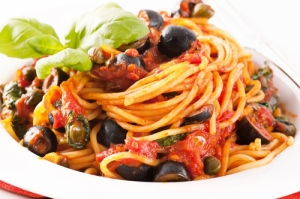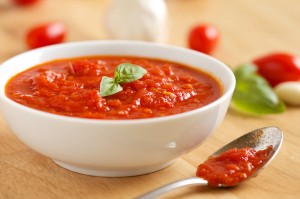5 Italian Pasta Sauces You Can Make From Scratch
Posted on May 17th, 2015 by Anna in Uncategorized | No Comments »
 An often overlooked yet crucial aspect of Italian cookery is its sauces. We are used to buying any old jar of sauce to add to our pasta, and yet a skilfully prepared sauce can make or break a meal. The thought of making your own can conjure of the image of slaving in the kitchen for hours, but don’t be intimidated. Here are a few deliciously simple recipes you can try for yourself with minimal prep time.
An often overlooked yet crucial aspect of Italian cookery is its sauces. We are used to buying any old jar of sauce to add to our pasta, and yet a skilfully prepared sauce can make or break a meal. The thought of making your own can conjure of the image of slaving in the kitchen for hours, but don’t be intimidated. Here are a few deliciously simple recipes you can try for yourself with minimal prep time.
- Marinara. This classic sauce you’ll go back to time and time again, and it’s far easier to cook than you might believe. All you need is a can of full tomatoes, some garlic, and herbs to taste. Sautee the garlic in olive oil and crush the tomatoes by hand in a bowl, then add the tomatoes and some water to thin it out to the skillet. Season with oregano and salt, and add basil as a garnish.
- Alfredo. A rich sauce that goes perfectly with linguini is made by combining garlic, heavy cream, butter, and Parmesan cheese in a skillet and stirring until it thickens. Flavor with salt, pepper, and white wine if you wish, or experiment by adding prawns, mushrooms, shredded bacon, et cetera.

- Carbonara. For a sauce with more bite, try carbonara. Sautee a chopped onion with crushed garlic and strips of prosciutto ham in olive oil. Next, add some cream and two whisked eggs, plus salt and pepper to taste. Once the mixture has thickened, add Parmesan cheese and stir in your pasta.
- Puttanesca. This more complicated sauce packs a powerful flavor for lovers of anchovies and capers. Start by sautéing some onions, and halfway through add some garlic and a handful of chopped anchovies. After the mixture has cooked down, add two tablespoons of tomato paste plus a can of crushed tomatoes, oregano for seasoning, and chopped olives. After letting the sauce cook down for a few minutes, add two tablespoons of capers and simmer briefly. Season with salt and garnish with chopped fresh parsley.
- Pesto. When done properly, pesto can completely transform a pasta dish, sandwich, or salad. Better yet, no cooking is involved in its preparation—all you need is a food processor. Take three cups of fresh basil leaves and combine them with one cup of pine nuts, one cup of olive oil, a quarter cup of Parmesan cheese, and some garlic. Add salt and pepper to taste, and then process the mixture as finely or coarsely as you want. Pesto can be added to pasta dishes of all sorts and provides an excellent zing to anything with chicken or tomatoes.
If you have the interest to go deeper into the intricate world of Italian sauces, you will find an eclectic world and sweet and savory concoctions waiting for you. To learn more, check out some more recipes straight from the source. To do that, why not take a beginner’s Italian course? If you aren’t sure of your level or would like some more information, contact us and we’ll be happy to get you on your way.




